Your Skin Hates Autumn. Here’s How to Fix It With Food.
After more than a decade of helping people with their nutrition, I’ve learned to see the seasons change right on my clients’ faces. It’s like clockwork. As soon as the air gets that crisp autumn chill, people start telling me their skin feels tight, looks tired, and is suddenly way more sensitive. It’s easy to blame the cold weather and the dry indoor heat—and you’re not wrong! But the real breakthrough usually happens when I ask, “So, what have you been eating?”
In this article
- First, Why Does Your Skin Freak Out in the Fall?
- Part 1: Rebuild Your Skin’s “Mortar” with Healthy Fats
- Part 2: Repair Summer Damage with an Antioxidant Army
- Part 3: Don’t Forget Your Gut (It’s Talking to Your Skin)
- Okay, How Do I Actually Do This?
- A Few Final Thoughts and Common Mistakes
- Inspirational Gallery
Honestly, the switch from light, hydrating summer foods to the richer, heavier meals of fall can be a shock to the system. And your skin? It’s often the first place to show that stress.
Think of your skin as a messenger. It’s not just a protective suit; it tells the world what’s going on inside. The creams and serums you slather on are important, for sure, but they’re only half the battle. The real, lasting change comes from giving your skin the right building blocks from the inside out. This isn’t about chasing some single, magical “superfood.” It’s about understanding that your skin’s needs shift with the seasons and learning how to feed it what it craves. Let’s dive into how the autumn harvest is basically nature’s best-kept secret for skin repair.
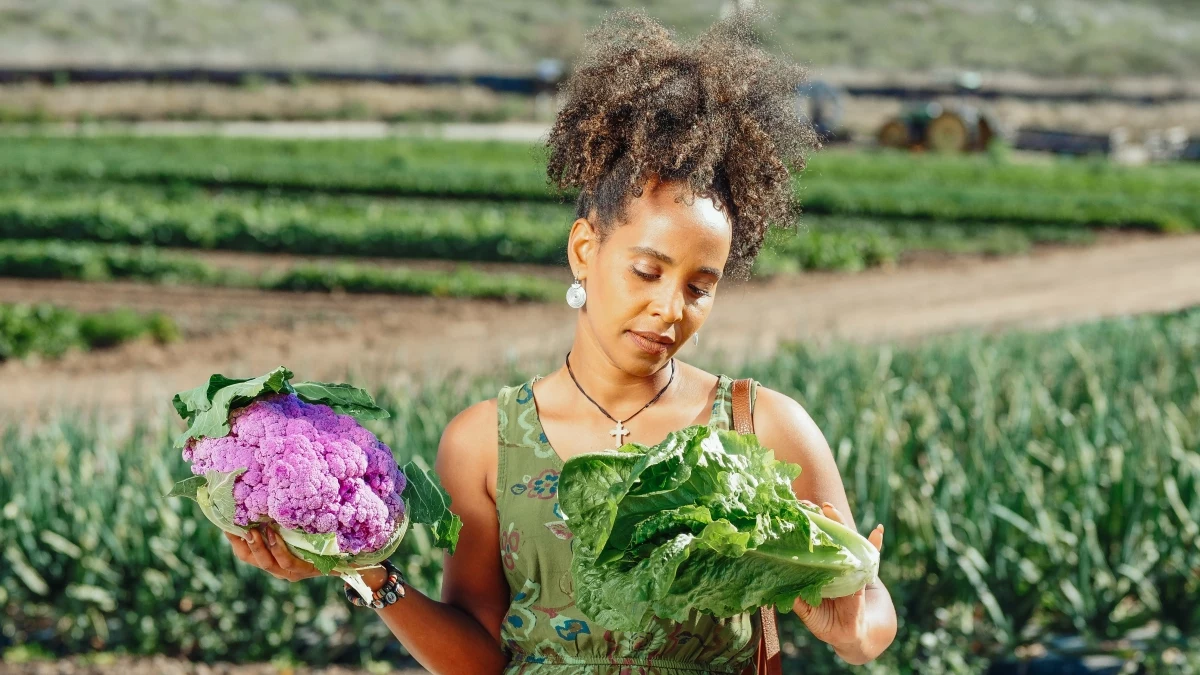
First, Why Does Your Skin Freak Out in the Fall?
To get why fall is so tough on skin, you have to understand something called the skin barrier. The simplest way to picture it is like a brick wall. The “bricks” are your skin cells, and the “mortar” holding them all together is a mix of natural fats (lipids) like ceramides and fatty acids.
This little wall does two massive jobs: it keeps moisture in and it keeps irritants and pollutants out. In the summer, the humid air gives our skin barrier a helping hand, keeping it nicely hydrated. But when autumn rolls in, the air gets cold and dry. This literally starts pulling moisture right out of your skin. Then you go inside and crank up the heat, making the air even drier. It’s a recipe for disaster.
When the “mortar” in your skin barrier starts to crack, you get hit with a bunch of problems:
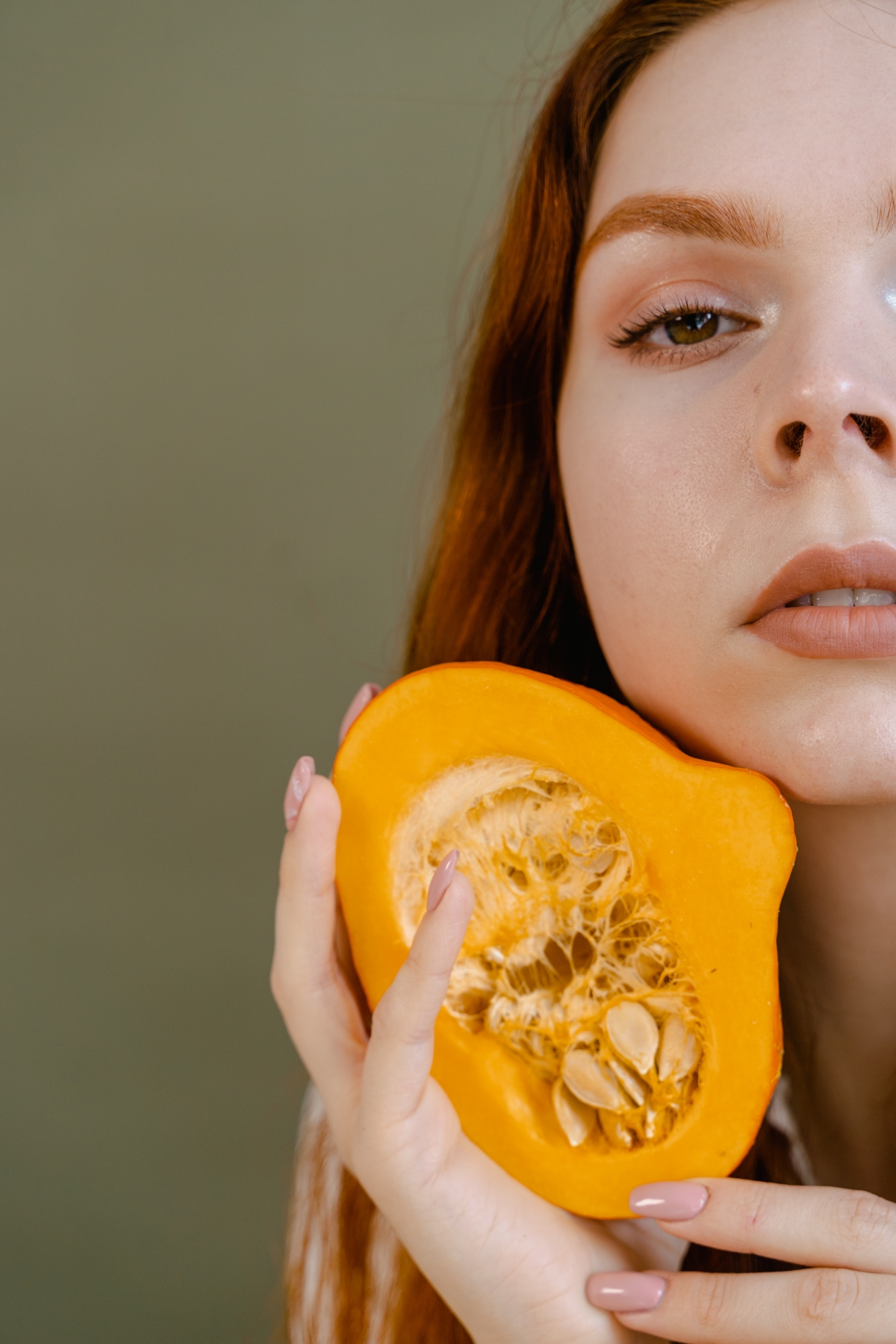
- Dehydration: Your skin loses that plump, bouncy feel, and fine lines suddenly look way more obvious.
- Sensitivity: Without a strong defense, irritants can sneak in, causing redness and random flare-ups.
- Dullness: Light doesn’t reflect well off a rough, dry surface, so your glow just sort of… disappears.
- Flakiness: The skin’s natural shedding process goes haywire, leaving you with dry, flaky patches.
So, our mission is to use food to rebuild that mortar from the inside. And luckily, autumn’s harvest is packed with everything we need.
Part 1: Rebuild Your Skin’s “Mortar” with Healthy Fats
The fatty mortar of your skin is directly built from the fats you eat. We’re not talking about greasy pizza; we’re talking about essential fatty acids that your body can’t make on its own. These are non-negotiable for a strong, water-resistant barrier.
Pumpkin Seeds and Walnuts: The Unsung Heroes
Pumpkin seeds are an absolute powerhouse. They’re loaded with omega-6 fatty acids, which are a core component of those ceramides we talked about—the literal mortar of your skin. They’re also packed with zinc, a mineral that’s crucial for cell repair and calming inflammation, which is a big win if you’re prone to breakouts.
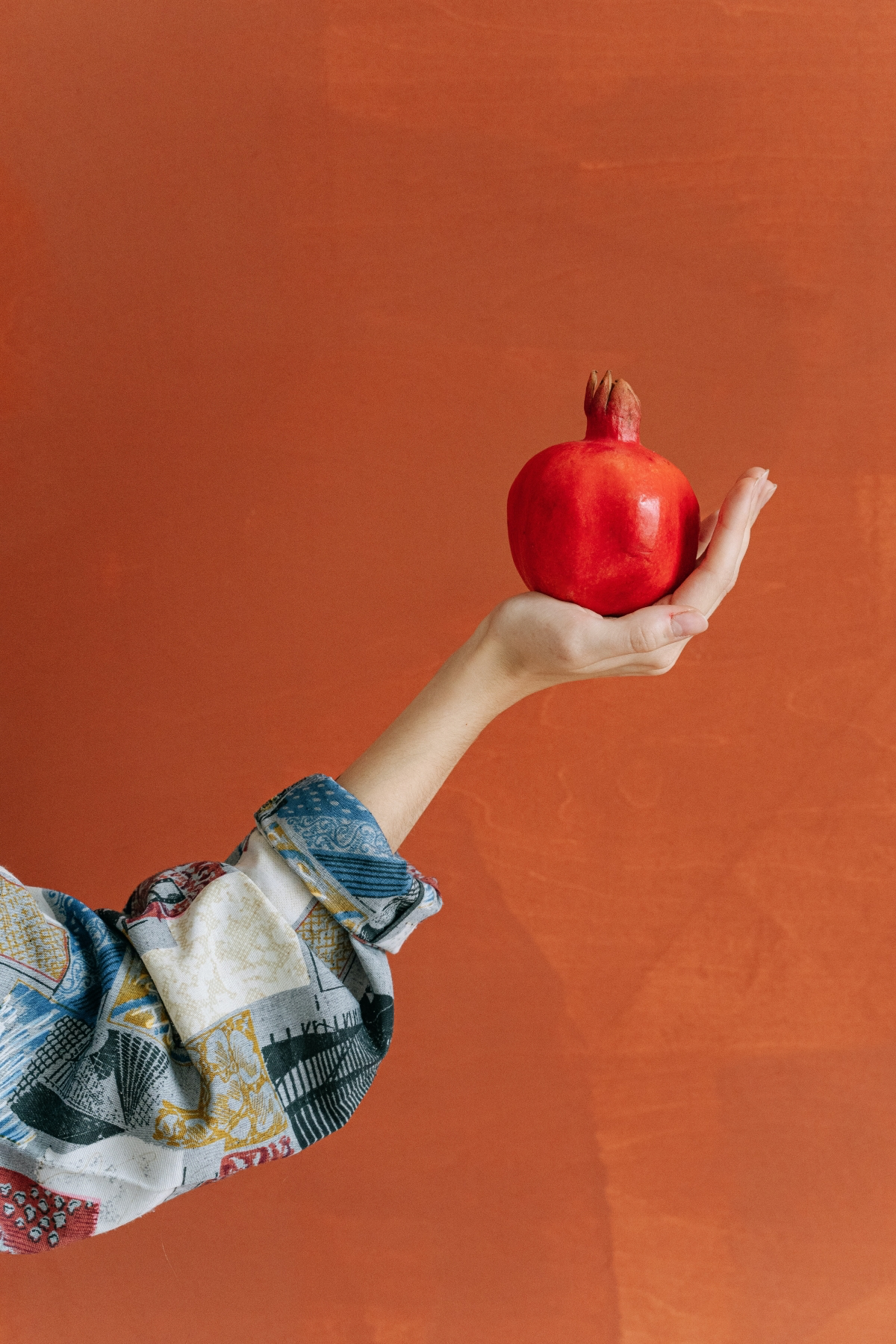
Walnuts are one of the best plant-based sources of anti-inflammatory omega-3s. These help calm redness and regulate your skin’s oil production. A small handful (about a quarter cup) is all you need. A bag of raw walnuts might seem pricey at around $10-$12, but when you’re only eating a small handful a day, it lasts for weeks, making it a pretty solid investment.
Quick Tip: Not a fan of walnuts or have an allergy? No worries. Chia seeds or ground flax seeds are fantastic alternatives for getting those omega-3s. I tell my clients to make a simple “sprinkle mix” by combining raw pumpkin seeds, sunflower seeds (for vitamin E), and flax seeds in a jar. A tablespoon on your oatmeal, yogurt, or salad every day is an incredibly easy win.
Part 2: Repair Summer Damage with an Antioxidant Army
All that glorious summer sun also created a ton of free radicals—unstable molecules that damage your skin cells, leading to dark spots and a weaker barrier. Autumn is the perfect time to flood your system with antioxidants to clean up the mess.
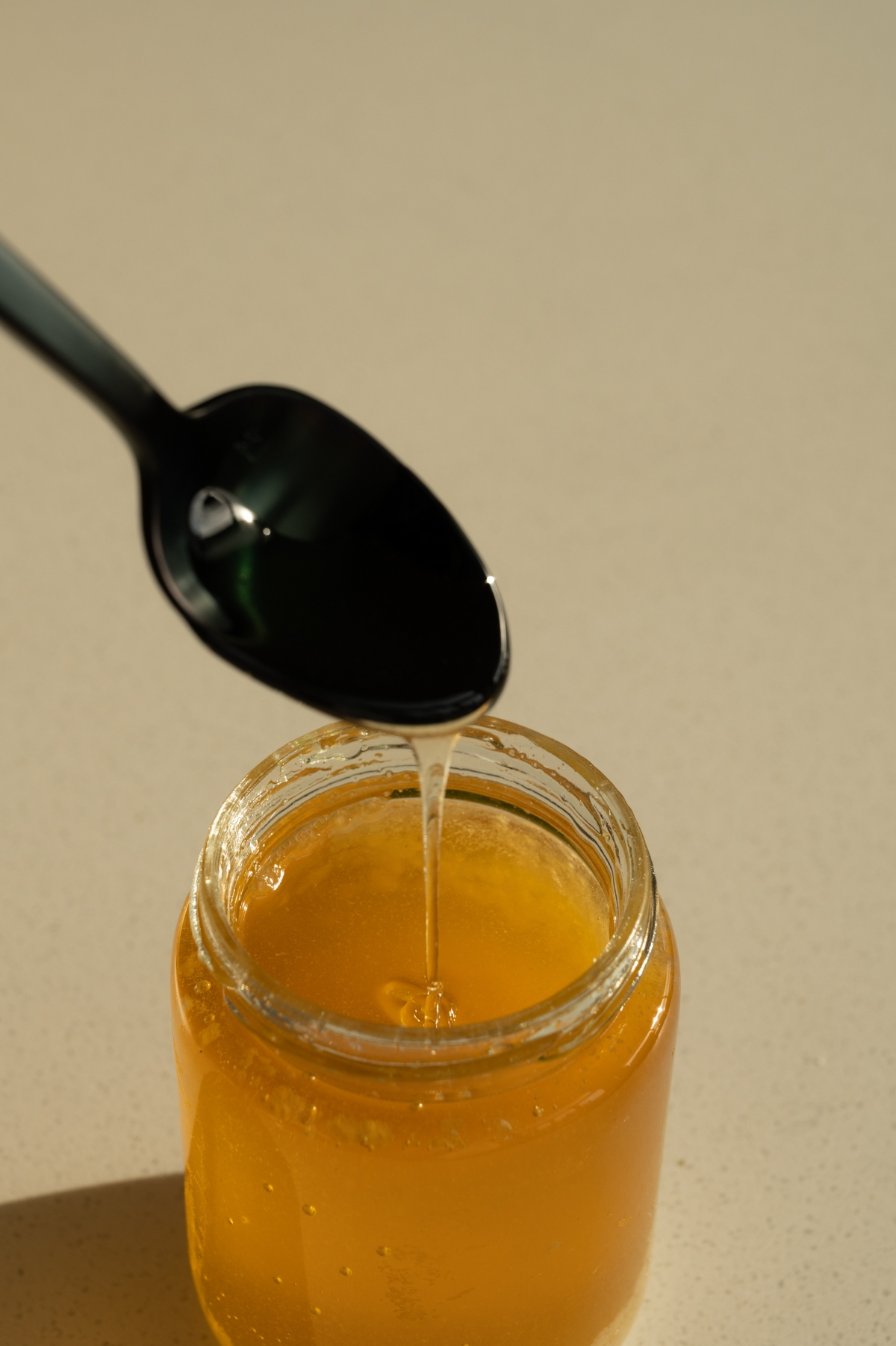
Carrots and Sweet Potatoes for a Healthy Glow
That beautiful orange color in carrots, sweet potatoes, and butternut squash comes from beta-carotene. Your body cleverly converts this into Vitamin A, a true skin superstar. Vitamin A is essential for healthy cell turnover—the process of shedding old, damaged cells and bringing fresh, new ones to the surface. It’s what keeps your skin looking bright and prevents pores from getting clogged.
Heads up! Vitamin A is a fat-soluble vitamin, meaning your body can’t absorb it without a little fat. So roasting your carrots or sweet potatoes with a drizzle of olive oil isn’t just for taste; it’s for function. I remember one client who struggled with those stubborn little bumps on the back of her arms (keratosis pilaris) saw a huge improvement once we upped her intake of these orange veggies alongside healthy fats.
Pomegranates for Serious Protection
These jeweled fruits are more than just pretty. They contain unique antioxidants that are incredible at fighting inflammation and helping protect your skin from environmental damage. Oh, and some studies suggest they help preserve collagen, which is what keeps skin firm.

My advice? Eat the pomegranate seeds (called arils), don’t just drink the juice. The juice is often a sugar bomb and lacks the fiber you get from the whole fruit. To save money, buy them whole when they’re in season, or grab the pre-packaged arils if you want to skip the messy prep work.
Apples and Cauliflower for Collagen Building
Think you need oranges for Vitamin C? Think again. Apples (with the skin on!) are a great source, and they also contain quercetin, another powerful antioxidant. And here’s a surprise: cauliflower is loaded with Vitamin C. Your body absolutely requires Vitamin C to build collagen. If amino acids are the bricks, Vitamin C is the construction crew. To get the most bang for your buck, try steaming or stir-frying cauliflower instead of boiling it to death, which destroys the vitamin C. Eating it raw is even better!
Part 3: Don’t Forget Your Gut (It’s Talking to Your Skin)
There’s a massive connection between your gut health and your skin. An unhappy gut can lead to inflammation that shows up as acne, eczema, or rosacea. Autumn foods rich in fiber are your gut’s best friend.

The fiber in foods like apples, Brussels sprouts, and squash acts as a prebiotic—it’s food for the good bacteria in your gut. A happy gut microbiome helps keep your gut lining strong, preventing inflammatory stuff from leaking into your system and causing skin drama.
By the way, now is a great time to explore traditional fermented foods like sauerkraut or kimchi. They provide probiotics (the good bacteria themselves). Just a heads-up: if you’re new to them, start with a small amount, like a tablespoon, as they can cause a bit of temporary bloating while your system adjusts.
A Quick Word on Honey
Let’s be real about honey. Yes, raw, unpasteurized honey has some cool antimicrobial properties. But from a metabolic standpoint, it’s sugar. I advise using it strategically—like a teaspoon in tea for a sore throat—not as an everyday “healthy” sweetener you drizzle on everything.
And a critical safety reminder: NEVER give honey to an infant under one year old. It’s not a risk for adults, but it can be very dangerous for babies.
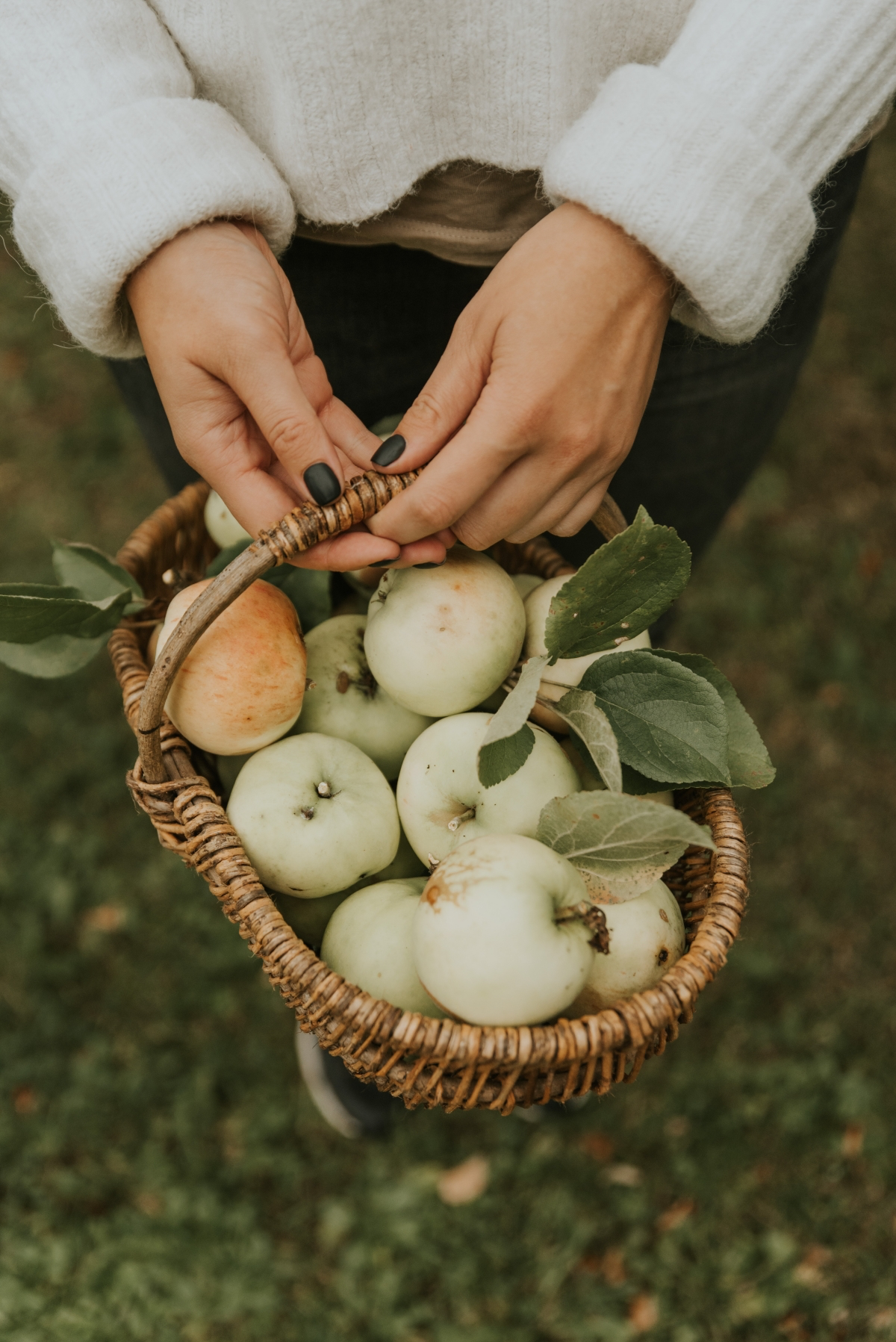
Okay, How Do I Actually Do This?
Knowing this stuff is great, but putting it into practice is what matters. Here are a few dead-simple strategies.
Strategy 1: The Sunday Batch Roast
This is a game-changer. Preheat your oven to 400°F (200°C). On a large baking sheet, toss 1 cubed butternut squash, 1 bunch of carrots, and 1 head of cauliflower florets with a good glug of olive oil, salt, pepper, and some rosemary. Roast until everything is tender and a little caramelized. Store it in the fridge and for the next 3-4 days, you can add a scoop to salads, have it as a side, or blend it into a quick soup. Effortless.
Strategy 2: The 1-Minute Skin Smoothie
Instead of a formula, here’s my exact go-to autumn skin smoothie. It’s creamy, delicious, and you can’t even taste the veggies, I promise. Blend this:
- 1 cup unsweetened almond milk
- 1 tablespoon pumpkin seeds
- 1 big handful of spinach
- 1/2 cup frozen cauliflower rice (trust me!)
- 1/4 cup frozen raspberries
If cauliflower just isn’t your thing, half of a frozen zucchini works just as well and is totally tasteless.
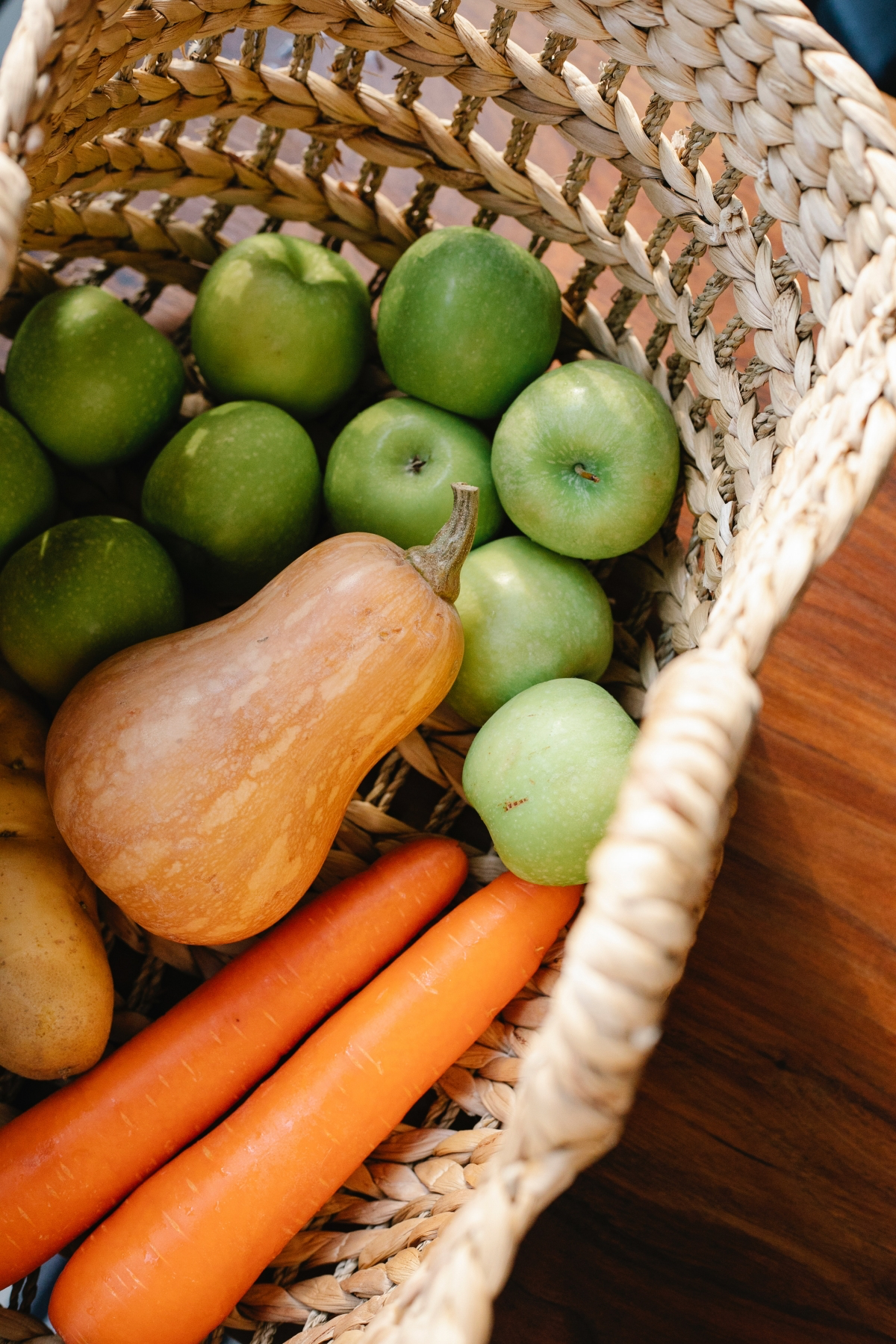
Strategy 3: The Easiest Win of All
Feeling overwhelmed? If you do just ONE thing, make it this: swap your usual 3 PM snack of chips or cookies for an apple with a tablespoon of sunflower seed butter. That’s it. You’ve just added fiber, antioxidants, and healthy fats in one easy move.
A Few Final Thoughts and Common Mistakes
Building healthy skin is a marathon, not a sprint. Be patient! You’re making changes from the inside out, so it can take 4-6 weeks of consistency to really start seeing a difference in your skin’s texture and hydration.
And watch out for these common pitfalls:
- Pitfall
1: Forgetting Water.
All this amazing fiber is fantastic, but it needs water to do its job properly. If you increase your fiber without increasing your water, you can actually make things worse. Aim for at least 8 glasses a day. - Pitfall
2: Overdoing the Nuts.
A small handful is perfect. They’re powerful, but they are also very calorie-dense. I once had a client go all-in on nuts but forget to increase their water intake, and their skin actually got more congested at first. Balance is truly everything!
Finally, while nutrition is an incredibly powerful tool, it’s not a magic wand. If you’re dealing with a persistent or severe skin condition like cystic acne or psoriasis, you absolutely need to work with a board-certified dermatologist. The best approach is often a team one: medical treatment from a doctor, a targeted food plan, and the right skincare routine. By feeding your skin what it needs, you’re giving it the support it deserves to face the changing seasons with a healthy, happy glow.
Inspirational Gallery
Sweet Potatoes vs. Pumpkin: Both are autumn all-stars for your skin. Sweet potatoes are packed with beta-carotene, which your body converts to Vitamin A to help with cell turnover. Pumpkin, however, offers a double-whammy with beta-carotene plus zinc, which is fantastic for healing and managing breakouts. For acne-prone skin, pumpkin might have a slight edge.
A study in the American Journal of Clinical Nutrition found that higher intakes of Vitamin C and linoleic acid (an omega-6 fatty acid) were associated with a lower likelihood of a wrinkled appearance and senile dryness.
What this means for your autumn plate: Combine vitamin C-rich foods like bell peppers with sources of linoleic acid, such as sunflower seeds or walnuts, for a powerful anti-aging, hydrating duo.
Is my morning coffee habit ruining my skin in the fall?
Not necessarily, but moderation is key. Coffee is a diuretic, which can contribute to dehydration when the air is already dry. The trick is to balance it. For every cup of coffee, drink an extra glass of water. And consider swapping your second or third cup for a skin-friendlier alternative like a matcha latte, which is rich in the antioxidant EGCG, known for protecting skin from environmental stress.
Beyond just water, think about ‘eating’ your hydration. Many autumn harvest foods have a high water content and provide extra benefits.
- Cucumber: Still available in early fall, it’s over 95% water and contains skin-soothing silica.
- Pears: A great source of fiber and water, helping keep your system and skin hydrated.
- Broth-based soups: A warm, savory way to increase your fluid intake while getting nutrients from vegetables.
The unsung hero of skin health: Zinc. This mineral is crucial for cell repair, protecting against UV damage, and has anti-inflammatory properties. While oysters are the top source, you can easily get it from more autumn-appropriate foods like beef, lentils, chickpeas, and especially pumpkin seeds. A small handful is a perfect skin-supporting snack.
- A calmer, less reactive complexion.
- Better moisture retention, even with the heating on.
- A noticeable ‘glow from within’.
The secret? Focusing on healthy fats. They are the literal building blocks of your skin cells’ membranes. Without enough good fats from sources like avocados, olive oil, and nuts, your skin barrier weakens, becoming leaky and prone to dryness and irritation.
Don’t forget the power of spices. Turmeric, with its active compound curcumin, is a potent anti-inflammatory that can help calm redness and sensitivity. A ‘golden milk’ latte made with a high-quality powder from a brand like Diaspora Co. before bed can be a soothing ritual for both your mind and your skin.
One common mistake: Cutting out all fats to avoid breakouts. It’s a myth that often backfires in the fall. Your skin *needs* healthy fats to maintain its protective barrier against the cold. The key is choosing the right ones. Ditch the inflammatory trans fats in processed foods and instead embrace the omega-3s in fatty fish like salmon or chia seeds from brands like Navitas Organics.










